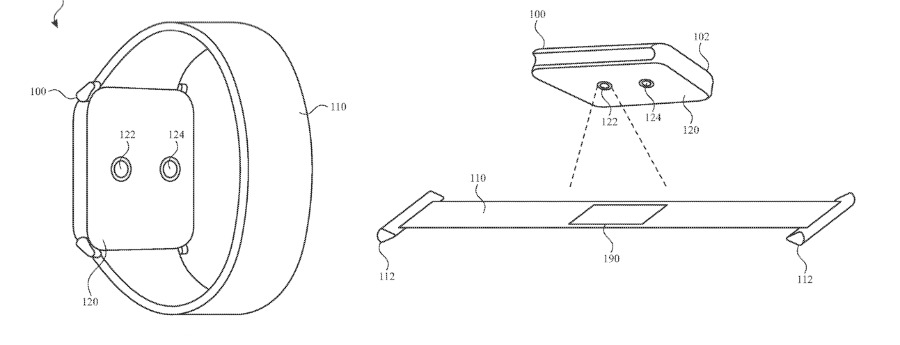Just changing the strap could make an Apple Watch switch to a different face or reconfigure settings
Just swapping to another band may be enough to make a future Apple Watch reconfigure settings, start workouts, and track your strap usage.
Right from the start, the bands or straps for Apple Watch have contained a feature that is typical of Apple. The way that they attach and detach so firmly yet so easily is an example of how the company finds that one thing nobody else has thought of, yet everyone else now knows is right.
Even with that, though, Watch bands have been pretty static, unchanging parts of the Apple Watch experience for years. You can swap them around, you could change them a hundred times a day, they were still just straps.
“[Apple Watch] electronic device can respond to the identification of a particular band by performing particular functions,” says a newly granted Apple patent, “such as changing an aspect of a user interface or altering settings of the electronic device.
“Identification of bands for wearable electronic devices” still does not change what a band itself can do — there’s no mention here of bands that automatically communicate with the Watch. Nonetheless, when you swap out one band for another, this proposal says that the Watch should be able to tell.
That’s more than just being able to detect that a band has been attached or detached, it is specifically that the Watch should recognize which band is in use. And then having identified the band, the Watch should use that identification in some way.
“[The Apple Watch] can perform a variety of other actions upon identification of a band,” says Apple. “It will be recognized that the detection of an identification element can be followed by any associated action that can be performed by the electronic device.”
“For example, where the [Watch] has the required capabilities, the electronic device launches an app, opens a website, starts a timer, displays a message, provides an alert, communicates with another device, and/or other functions,” it continues.
While Apple lists these many possibilities, in practice the process could initiate anything at all that an Apple Watch is capable of. It all comes down to identifying a specific band, and consequently the majority of the patent application is concerned with different methods of doing that.
Some of those methods require a QR code which the user could briefly position opposite the back of the Watch.
“For example,” continues the patent application, “light emitted from the light source can be reflected off of the identification element. [The] identification element 190 can include a pattern on the band that reflects the wavelength(s) of light emitted from the light source… [which] can be infrared light, visible (e.g., green) light, or another wavelength value or range.”
As well as switching to Theater Mode when you put on your best band, the Apple Watch can also log just when and how much you use any given strap. “The tracked usage information includes dates, times, durations, locations, activities, biometrics of the user, and/or environmental features in relation to periods before, during, and/or after usage of each band,” suggests Apple.
This story originally appeared on Appleinsider


